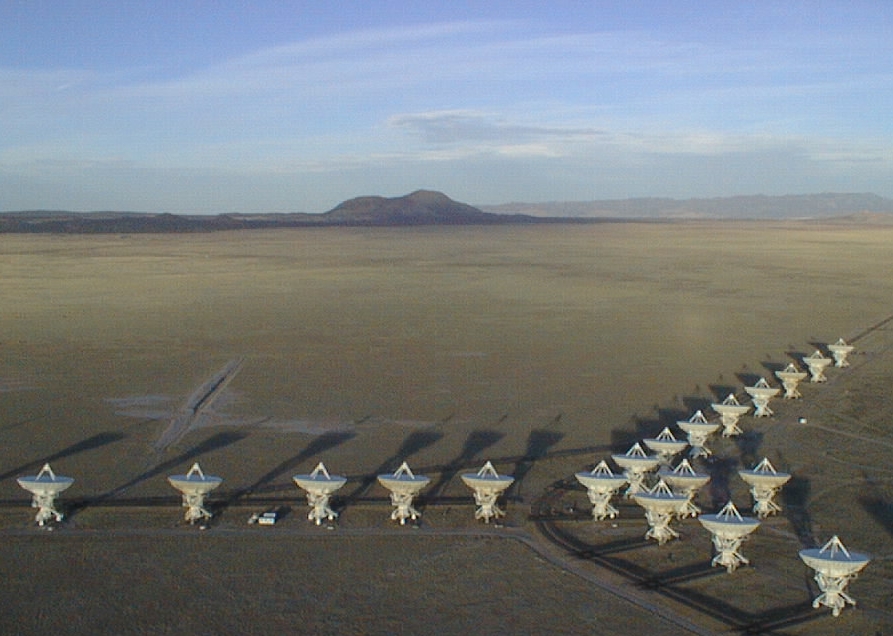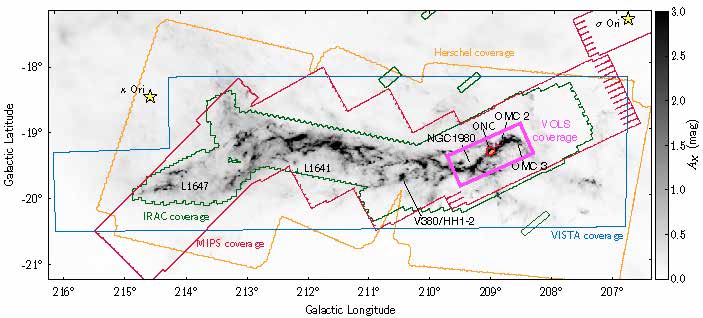An international team of astronomers led by the researcher Gemma Busquet of the Institute of Cosmos Sciences (ICCUB-IEEC), has been granted 306 telescope hours for their observational project “VOLS: The VLA Orion A Large Survey”.
This survey will observe the northern region of the molecular cloud Orion A using the Karl G. Jansky Very Large Array Telescope in New Mexico (USA) to build a census of the stellar population, characterize their radio emission and quantify their rates of mass loss (ejected from the star) and mass accretion (fallen into the star from the stellar disk) and how these quantities determine the final properties of stars.
The observations will focus on two radio frequency bands. This will be the first radio study to cover a large area of Orion A at subarcsecond resolution, improving the sensitivity by a factor of 20 compared to previous large-scale surveys in Orion.

The main goal of this survey is to study the evolution of young stellar objects (YSOs) and protostars (which are the earliest phases of the life of a star) to determine the properties of stars and planetary systems. The early stages of star and planet formation involve a balance between accretion and ejection of material during the gravitational collapse. This balance and the consequent protostellar evolution are crucial in determining the final properties of stars and their planetary systems.
In this context, both mass accretion rate and mass-loss rate are fundamental, albeit still uncertain, quantities in star formation. It is, therefore, logical to ask how these quantities evolve with time and, just as importantly, how they vary across the entire mass spectrum.
The team proposes the VLA Large Program VOLS to investigate how these rates vary with protostellar evolution, and how they depend on the initial conditions (i.e., the environment) and on the mass of the star.
To answer these questions, the team will use the Very Large Array Telescope to observe the northern part of the molecular cloud Orion A, covering an area of approximately 0,5 deg2 (which is roughly four times the size of the moon in the sky). Orion A is the nearest star-forming complex containing a broad range of environments populated by protostars and YSOs with different masses and evolutionary stages, representing a testbed for star formation theories.

Credit: Busquet et al
Together with previous datasets, such as Gaia DR3, VOLS will provide the ultimate correlation between the characteristics of the radio emission from YSOs and their properties. This project is crucial for the next generation of centimetric interferometers such as the Square Kilometer Array (SKA) or the ngVLA since it will provide a radio template of YSOs and protostars.
VOLS counts with 46 researchers around the globe, including several members of the ICCUB and the Institut of Space Sciences (ICE, CSIC).



